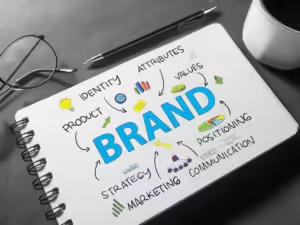It’s a fact that a one-size-fits-all strategy to career development is no longer effective in the quickly changing workplace. Members of your team? They combine talents, motives, and aspirations.
Typical career ladders now resemble a network of meandering, interconnecting passageways. Additionally, every member of your team needs to feel that they are improving, changing, and most importantly, being appreciated. If they don’t feel that, they’re going to leave.
But in a world where professional aspirations vary widely, how do you provide individualized career development? Together, let’s navigate this.
What are professional development tools?
Organizations can use professional development tools, such as assessments, software, and resources, to help employees identify their potential, skills, and goals and to help them navigate their professional advancement.
To optimize performance, engagement, and success, organizations and teams can utilize them to develop, oversee, simplify, facilitate, and monitor employee training strategies, programs, and procedures.
The Chief Operating Officer of BPTLAB, Sarah Watson, states that “a well-rounded application of career development tools establishes a robust framework that facilitates wholesome employee development, encourages a growth mindset, and drives organizational success.”
Professional development tools
There are various approaches and resources available to support professional development, each with a unique function. Knowing what you have to work with can help you select the right training tools to meet your demands
Tools for assessing personality
Every worker has distinct goals, motivations, and work styles or environments that best utilize their abilities. However, these information are frequently unknown even to the staff, meaning they aren’t being fully utilized.
Tools for personality assessments assist in identifying the strengths, driving forces, and unrealized potential of each employee. Why? In order to assist them develop and use these skills, you may help them advance more quickly and increase their value as an asset to your business.
The Myers-Briggs Type Indicator (MBTI): helps people become more vitally aware of what makes them tick, where they shine, and who they are. This helps people acquire developmental insights for both individuals and teams.
CliftonStrengths: employs a 177-item assessment to assist organizations in fully comprehending the innate strengths, potential for development, and distinctive qualities of their workforce.
Tools for managing skills
Are the resources you have for talent development being used effectively? Do you know what training you need to stay current and competitive in your industries, or what skill gaps you have?
These are the issues that skill management tools try to address. Career development plans, competency evaluations, skills matrices, career frameworks, and succession planning are some of their common elements.
TalentGuard: With clever upskilling and reskilling tactics, TalentGuard can assist you in integrating talent development into your corporate culture so that staff members can thrive in their positions or advance to the next level of their career ladders.
ManySkills: MuchSkills focuses on finding and fostering possibilities for talent growth and development, providing you with the tools you need to manage and visualize the skills within your business and create a flexible, engaged workforce.
Online learning platform
Consider online learning platforms as a kind of marketplace where you can choose from a variety of courses offered by respectable universities and subject matter experts. They provide you with easy access to materials and pertinent learning content so you can improve your knowledge and abilities whenever and wherever you choose.
The pricing, variety of courses offered, presentation quality, curriculum depth, available material formats, and certifications or qualifications offered are all variables in learning tools. Your unique requirements and learning standards will determine which solution is best for you
LinkedIn learning: Organizations can access over 21,000 courses in business, marketing, technology, and the arts through LinkedIn Learning, which is taught by carefully selected professionals in the subject. Using quick films, tests, and practice questions, the platform provides an interactive learning environment.
Coursera: All skill levels are catered to, and a variety of specializations are covered in Coursera’s courses, which range from digital marketing and accounting to UX design. In addition, it provides academic degrees from recognized colleges, professional certifications, completion certificates, and personal development courses.
Coaching and mentoring tools
Among the most effective and popular professional development methods are mentoring and coaching because they offer committed assistance and encouragement while using a hands-on approach to accelerate the acquisition of particular information and abilities.
Qooper is a platform that assists employers in matching their staff members with mentors and coaches who can impart new skills, provide tailored career assistance, and equip them to effectively handle obstacles unique to their positions or the workplace in the future.
CoachHub: For all professional levels, from entry to executive, CoachHub provides all-inclusive coaching services that include individualized feedback and assistance, exercises and methods that are given step-by-step, and personalized direction.
Tools for learning experiences
If your employees have to physically visit you, send you multiple emails to request training, or switch between platforms each time they need answers, it will be detrimental to their morale. or if they must wait several weeks or months before you provide fresh training programs.
Then you need a learning experience platform or tool to create and implement training programs, assign content to users, monitor learner progress, and arrange all of your courses and resources in one location in a fraction of the time it would typically take.
iSpring Learn: For businesses looking for an easy way to build blended and interactive learning experiences, iSpring Learn is a fantastic LMS solution. It is capable of translating your courses into 42 different languages with its text-to-speech capability.
360learning: Businesses may automate their whole learning and development workflow with the use of 360Learning’s cloud-based platform. It enables you to produce, organize, modify, and distribute instructional materials, training materials, and other content that can help your staff advance in their careers.
All-in-one tools
The resources, functions, and features of several career development tools are available on all-in-one tools—all under one roof.
The good thing about all-in-one tools is that it spares you from having to learn how to use numerous programs, as well as from the demotivation and interruption of workflow that switching between platforms can bring about.
Zavvy: Zavvy provides a robust suite of tools to help you launch and manage effective learning and development measures and restructure existing processes to promote better outcomes.
Conferences, workshops, and seminars
You can greatly benefit from the exposure, contacts, and networking possibilities that workshops, seminars, and conferences offer as they improve both hard and soft skills. additionally
Work rotations and job shadowing
Task rotations and job shadowing have the advantage of being far less expensive than professional development programs. They feel less disruptive because they are simple to deploy and occur naturally during the course of business.
Conclusion
Professional development tools can help you stay on top of industry developments and pinpoint the skills you lack and the competencies to develop to live up to the demands of jobs or become top experts in your areas of specialization.



